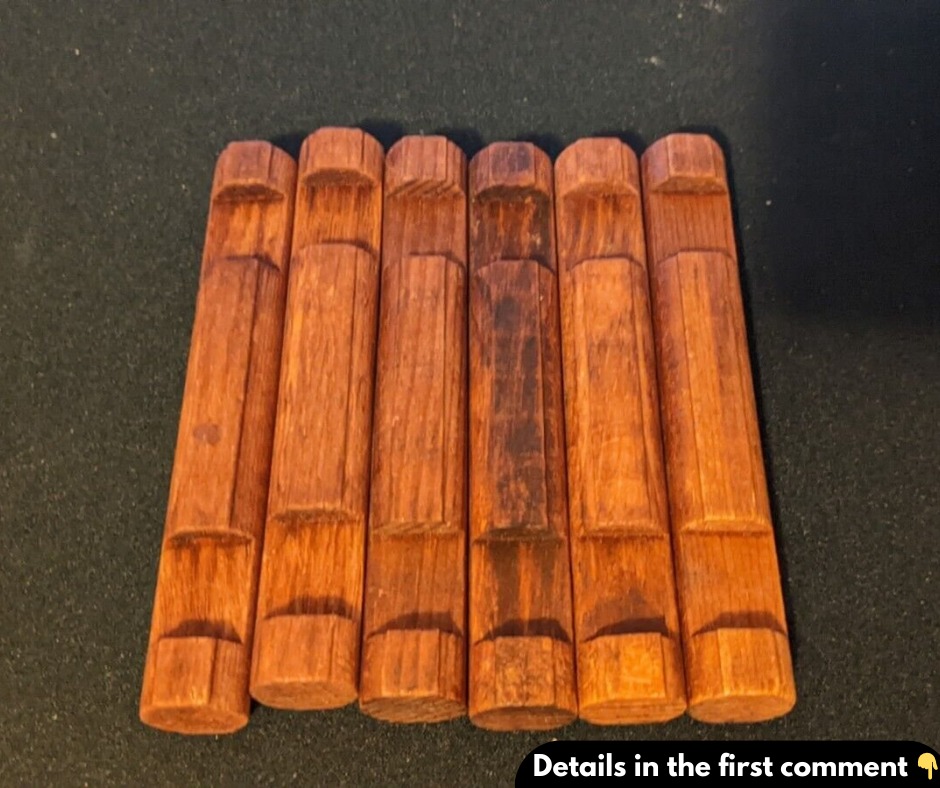For over a century, Lincoln Logs have been a treasured toy, sparking creativity in children with their simple yet ingenious design. Introduced in the early 20th century, these interlocking wooden blocks became more than just a plaything—they symbolized the fusion of fun and learning. In this article, we’ll take a closer look at the history, design, and lasting impact of Lincoln Logs, which have captured the hearts of young builders for generations.

The Birth of Lincoln Logs: Inspiration from Architecture
Lincoln Logs were invented in 1916 by John Lloyd Wright, the son of renowned architect Frank Lloyd Wright. While working with his father on the Imperial Hotel in Tokyo, Japan, John observed the hotel’s unique interlocking beam structure, which was designed to withstand earthquakes. This observation inspired John to create a toy that would allow children to replicate the same principle. His vision was to introduce a product that encouraged kids to build log cabins and other structures, blending imagination with educational play.
Initially, Lincoln Logs were produced by the Playthings Manufacturing Company, a business that John Lloyd Wright founded. The toy quickly gained popularity for its durability and educational value. By the late 1920s, Lincoln Logs had become a favorite among families. Despite changes in ownership and company mergers over the years, including Hasbro’s acquisition of the brand, the core concept of Lincoln Logs has remained the same—a classic toy that has stood the test of time.
Lincoln Logs: A Brilliantly Simple Design
The design of Lincoln Logs is remarkably straightforward, yet it opens up a world of possibilities. Each set contains notched wooden logs in various lengths, allowing children to stack and interlock them to create structures like cabins, forts, and towers. The simplicity of this design made Lincoln Logs accessible to children of all ages. The notched logs provide stability, making it easy for kids to build sturdy creations.
Beyond just play, Lincoln Logs served as valuable educational tools. Throughout the 20th century, both schools and homes used them to teach basic architectural and engineering concepts. Building with Lincoln Logs helped children develop spatial reasoning, problem-solving skills, and hand-eye coordination. The toy’s design encouraged kids to plan and execute their ideas with precision, teaching lessons that extended beyond playtime.
Educational Benefits of Lincoln Logs
Lincoln Logs earned widespread praise not only for their entertainment value but also for the educational benefits they offered. The toy introduced children to the fundamentals of construction, engineering, and physics. Building with Lincoln Logs required children to think about balance, stability, and design as they constructed their structures. Through hands-on play, they explored concepts such as weight distribution and how materials can be used effectively to create strong buildings.
Parents and educators appreciated the way Lincoln Logs sparked curiosity and creativity in children. As kids built cabins, forts, or towers, they gained a deeper understanding of how real-life structures were constructed. Whether working on a simple log cabin or an intricate fort, Lincoln Logs turned play into a fun and educational experience, helping children visualize and engage with the world of architecture.
Evolution of Lincoln Logs Through the Years
Even though Lincoln Logs were introduced over a century ago, they have continued to evolve while maintaining their original charm. Originally crafted from real wood, the toy has seen variations over the years, including plastic versions. However, the wooden sets remain the most cherished, and in recent years, Lincoln Logs have returned to their wooden roots, offering a sense of nostalgia and authenticity.
Along with material changes, Lincoln Logs have been reintroduced with different themes to keep them relevant in today’s toy market. Themed sets, such as Western forts and frontier towns, provide additional layers of creativity and fun. These updates have helped Lincoln Logs remain a popular choice in an era dominated by electronic toys, proving that simple, hands-on play still holds immense value for children.
The Legacy and Enduring Appeal of Lincoln Logs
The lasting success of Lincoln Logs lies in their ability to combine play with education. They are not just a toy but a legacy passed down through generations. Today, Lincoln Logs are sold in toy stores, displayed in museums, and used in educational programs. They serve as a symbol of timeless play, representing an era when toys were designed to inspire imagination and intellectual growth.
In a world where digital entertainment often takes center stage, Lincoln Logs offer a refreshing alternative. These classic wooden toys encourage open-ended, creative play, where the only limits are the boundaries of a child’s imagination. Lincoln Logs help develop critical thinking skills while allowing children to explore their creativity in a tactile, hands-on way.
Why Lincoln Logs Are Still Relevant Today
Lincoln Logs continue to stand out in today’s fast-paced, technology-driven world. Their nostalgic appeal resonates with parents who grew up playing with them, and many are now sharing the experience with their own children. Building with Lincoln Logs offers families a chance to bond over a shared activity, creating lasting memories while constructing something tangible together.
Lincoln Logs are more than just a childhood toy—they are a piece of history that has inspired generations of young builders and dreamers. From their creation by John Lloyd Wright to their continued presence in homes today, Lincoln Logs have proven their lasting value as both a source of entertainment and an educational tool. Their simple design fosters creativity, while their legacy reminds us of the enduring impact of hands-on learning. In a world dominated by fast-paced technology, Lincoln Logs provide an opportunity to slow down, build, and create—a tradition that will continue for years to come.





